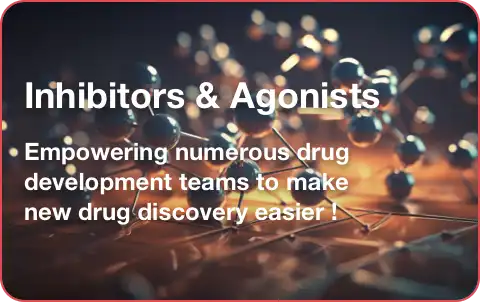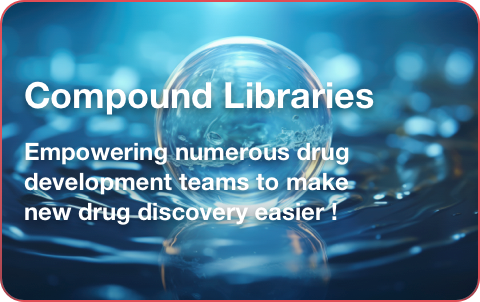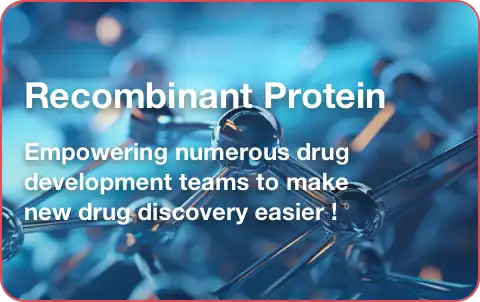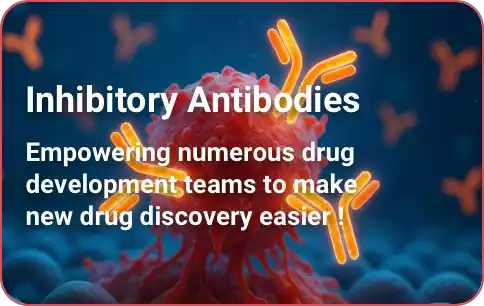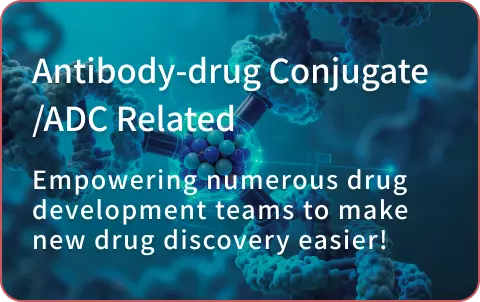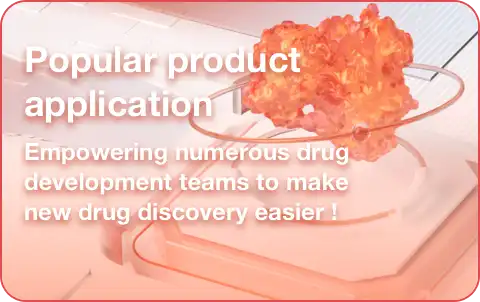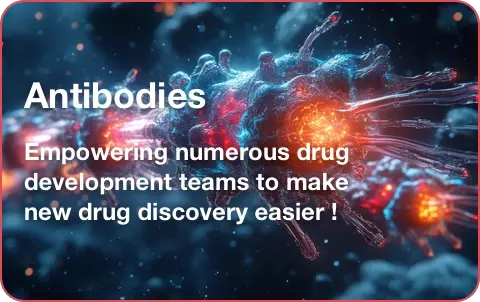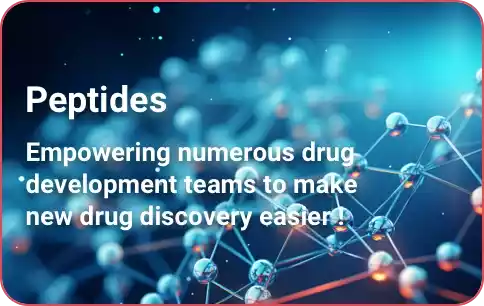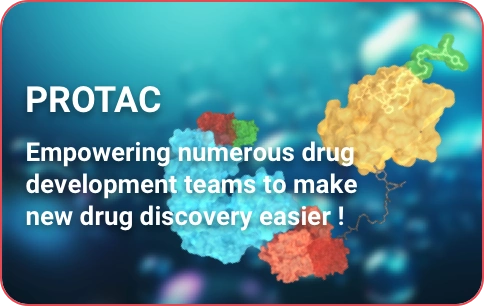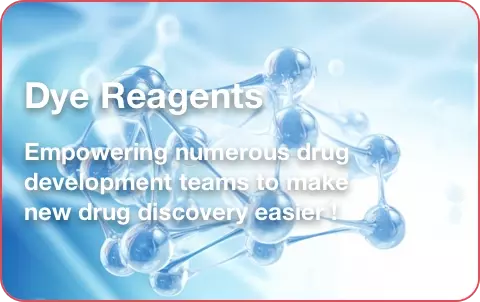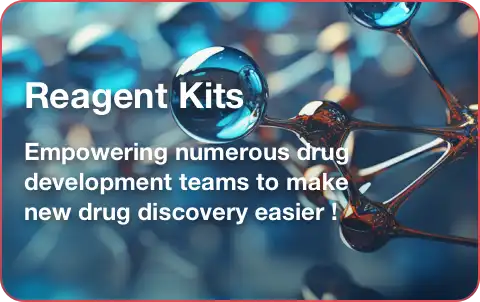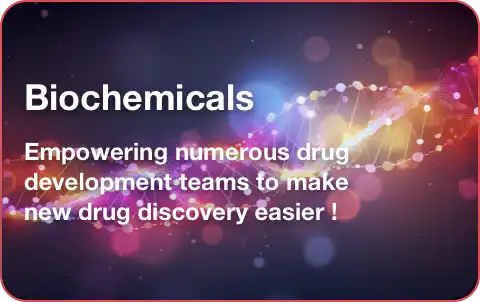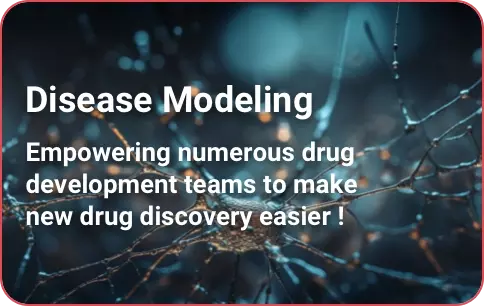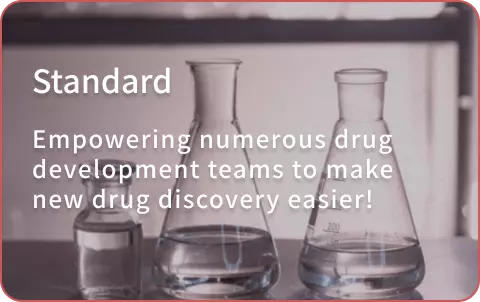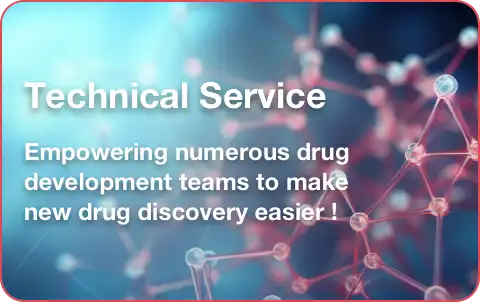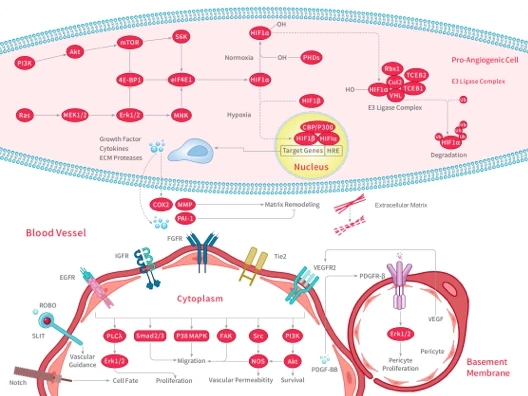 Your shopping cart is currently empty
Your shopping cart is currently empty
ANGPTL
(6)
ATP Citrate Lyase
(17)
Acetyl-CoA Carboxylase
(46)
Aconitase
(2)
Acyltransferase
(171)
Adenosine Deaminase
(23)
AhR
(32)
Amino Acids and Derivatives
(1136)
Aminopeptidase
(96)
Amylase
(71)
Angiotensin-converting Enzyme (ACE)
(207)
Apolipoprotein
(9)
CETP
(23)
CPT
(5)
Calcium Channel
(841)
Carbonic Anhydrase
(274)
Casein Kinase
(185)
Cytochromes P450
(690)
DHFR
(81)
Decarboxylase
(7)
Dehydrogenase
(576)
Drug Metabolite
(906)
Endogenous Metabolite
(4417)
Enteropeptidase (EP)
(6)
Epoxide Hydrolase
(68)
FAAH
(77)
FABP
(20)
FMO
(1)
FXR
(96)
Factor VIII
(8)
Factor VIIa
(7)
Factor Xa
(114)
Fatty Acid Synthase
(85)
GHR
(4)
GSNOR
(5)
Glucokinase
(76)
Glucosidase
(220)
Glutathione Peroxidase
(111)
Glyoxalase
(18)
HIF/HIF Prolyl-Hydroxylase
(241)
HMG-CoA Reductase
(97)
HSP
(324)
Hexokinase
(12)
Hydrogenase
(2)
Hydroxylase
(51)
IDO
(108)
Indoleamine 2,3-Dioxygenase (IDO)
(110)
Isocitrate Dehydrogenase (IDH)
(53)
LDL
(26)
LDLR
(52)
Lipase
(91)
Lipid
(68)
Liposome
(643)
Lipoxygenase
(249)
Liver X Receptor
(62)
MAGL
(70)
MAO
(110)
MTP
(12)
Mitochondrial Metabolism
(313)
N-Acetylglucosaminyltransferase
(1)
NADPH
(85)
NAMPT
(59)
NEDD4-1
(3)
NEDD8
(9)
NUDIX hydrolase
(2)
Neprilysin
(46)
PAI-1
(50)
PDE
(666)
PGK1
(3)
PKM
(57)
PPAR
(501)
Phosphatase
(590)
Phospholipase
(245)
Phosphorylase
(29)
Photosystem (PS)
(8)
Procollagen C Proteinase
(2)
Prolyl Endopeptidase (PREP)
(39)
RAR/RXR
(12)
REV-ERB
(11)
ROR
(111)
Reactive Oxygen Species
(923)
Reductase
(195)
Retinoid Receptor
(126)
SGK
(27)
Serine/threonin kinase
(111)
Stearoyl-CoA Desaturase (SCD)
(39)
Sulfotransferase
(1)
Taste receptor
(16)
Thioredoxin
(2)
Transaminase
(3)
Transferase
(283)
Transketolase
(14)
UGT
(22)
Vitamin
(104)
Xanthine Oxidase
(99)
glycosidase
(326)
hCE
(2)
stilbene oxidase
(1)
transporter
(120)
LDLR
LDLR (Low-Density Lipoprotein Receptor) is a cell surface receptor primarily responsible for cholesterol uptake and metabolism. Expressed in tissues including the liver, intestine, and arterial walls, LDLR regulates blood cholesterol levels by recognising and binding to low-density lipoprotein (LDL) particles, facilitating their internalisation and degradation. Dysfunction of LDLR is closely associated with hypercholesterolaemia and atherosclerosis. LDLR activity is regulated by multiple factors, including cholesterol levels and insulin, making it a valuable target for cardiovascular disease research.
Evolocumab
T99201256937-27-5
Evolocumab is an inhibitor of the humanized monoclonal antibody PCSK9. It binds to circulating PCSK9 protein, resulting in inhibition of PCSK9 binding to LDLR. It can be used in studies of hypercholesterolemia and atherosclerotic cardiovascular disease.
- $323
Size
QTY
LDL-IN-3
T10063180908-67-2In house
LDL-IN-3 shows anti-atherosclerotic and antioxidant activities.
- $388
Size
QTY
Muvalaplin
LY3473329
T776952565656-70-2
Muvalaplin (LY3473329) is an orally active lipoprotein (a) [Lp(a)] reagent that inhibits Lp(a) formation by blocking apo(a)-apo B100 interactions.
- $148
Size
QTY
Imanixil
HOE-402 free base
T1556175689-93-9In house
Imanixil (HOE-402 free base) is an LDL receptor (LDLR) inducer, a hypolipidemic and hypocholesterolemic compound with antiatherogenic activity that inhibits the production of very low-density lipoproteins (VLDLs).Imanixil acts by stimulating the LDL receptor pathway.
- $179
Size
QTY
Coptisine
Coptisin
T5S00533486-66-6
1. Coptisine (Coptisin) treatment increases cell viability based on its reversal effect on the enhanced activity of Indoleamine 2, 3-dioxygenase . 2. Coptisine treats myocardial I/R likely through suppressing myocardial apoptosis and inflammation by inhibiting the Rho/ROCK pathway. 3. Coptisine is a potential anti-osteosarcoma drug candidate, via exerting a strong anti-osteosarcoma effect with very low toxicity . 4. Coptisine with a high dosage could inhibit cholesterol synthesis via suppressing the HMGCR expression and promoting the use and excretion of cholesterol via up-regulating LDLR and CYP7A1 expression. 5. Coptisine suppresses adhesion, migration and invasion of MDA-MB-231 breast cancer cells in vitro, the down-regulation of MMP-9 in combination with the increase of TIMP-1 possibly contributing to the anti-metastatic function for breast cancer.
- $38
Size
QTY
BIBB 515
T4039156635-05-1
BIBB 515 is a selective and potent inhibitor of OSC in vivo with an ED50 value of 0.2-0.5 and 0.36-33.3 mg/kg in rats and mice, respectively. 2, 3-Oxidosqualene cyclase (OSC) is an important enzyme in the biosynthesis of animal, plant, and fungal sterols.
- $40
Size
QTY
PCSK9-IN-10
T72025368434-98-4
PCSK9-IN-10, a potent and orally active inhibitor of Proprotein Convertase Subtilisin/Kexin Type 9 (PCSK9), exhibits a half-maximal inhibitory concentration (IC50) of 6.4 µM. By enhancing the expression of Low-Density Lipoprotein Receptor (LDLR) protein and reducing PCSK9 expression, PCSK9-IN-10 effectively decreases atherosclerosis progression. This compound holds promise for hyperlipidemia research applications.
- $35
Size
QTY
Gemcabene
PD-72953
T11386L183293-82-5
Gemcabene (PD-72953) is a lipid-lowering agent with anti-inflammatory activity. Gemcabene lowers low-density lipoprotein cholesterol and triglycerides, raises high-density lipoprotein cholesterol, and decreases pro-inflammatory acute-phase protein, C-reactive protei
- $38
Size
QTY
Pep 2-8 ammonium salt(1541011-97-5 free base)
TP1881L1
Pep 2-8 ammonium salt is Proprotein convertase subtilisin/kexin type 9 (PCSK9) inhibitor. Potent inhibitor of PCSK9 binding to LDL receptor (IC50 = 0.8 μM). Restores LDL uptake in HepG2 cells treated with PCSK9.
- $137
Size
QTY
PCSK9-IN-11
T67776
PCSK9-IN-11 (compound 5r) is a potent PCSK9 inhibitor with oral activity, exhibiting inhibitory activity on PCSK9 transcription in HepG2 cells (IC50 = 5.7 μM) and capable of increasing LDL receptor (LDLR) protein levels. PCSK9-IN-11 is applicable for atherosclerosis research.
- $47
Size
QTY
Moxonidine
BDF5895
T102875438-57-2
Moxonidine (BDF5895) is a selective agonist at the imidazoline receptor subtype 1, acting as an antihypertensive drug.
- $33
Size
QTY
Propane-1,2,3-triyl tripalmitate
Tripalmitoylglycerol, Tripalmitin, Palmitic Triglyceride, Glycerol Tripalmitate
TWO2727555-44-2
Propane-1,2,3-triyl tripalmitate (Glycerol Tripalmitate) is a triacylglycerol found in dietary fats. In hamsters fed a diet enriched with it, Tripalmitin increases body weight, elevates plasma LDL levels, and reduces hepatic LDL receptor mRNA levels. It inhibits glucose-stimulated insulin secretion and decreases the viability of INS1 cells dose-dependently. Tripalmitin is used in cosmetic products for skin conditioning and as a thickening agent, and it forms lipid matrices of nanoparticles for drug delivery.
- $38
Size
QTY
Etofibrate
T255431637-97-5
Etofibrate is a combination of clofibrate and niacin, used to treat hyperlipemia.
- $39
Size
QTY
Nicanartine
T68115150443-71-3In house
Nicanartine is a cholesterol inhibitor that is used to treat cardiovascular disease and can be used to study atherosclerosis.
- $46
Size
QTY
20-HC-Me-Pyrrolidine
T62380
20-HC-Me-Pyrrolidine is a potent Aster protein inhibitor with IC50=0.06~0.71 μm for Aster-A, Aster-B, and Aster-C that blocks the ability of Aster proteins to bind and transfer cholesterol, including inhibiting the movement of LDL cholesterol to the endoplasmic reticulum.
- $201
Size
QTY
2-Acetamidophenol
Orthocetamol
T7238614-80-2
2-Acetamidophenol (Orthocetamol) has analgesic and antipyretic effects. 2-Acetamidophenol is an isomer of Paracetamol (4-acetamidophenol).
- $29
Size
QTY
Recaticimab
SHR-1209, SHR1209
T771442361290-85-7
Recaticimab (SHR-1209) is a humanized monoclonal antibody targeting PCSK9. By binding to PCSK9, Recaticimab promotes LDL receptor stabilization and surface expression on hepatocytes, leading to reduced plasma LDL cholesterol levels. Recaticimab is under study as a therapeutic candidate for hypercholesterolemia and related cardiovascular disorders.
- $232
Size
QTY
Orticumab
MLDL1278A
T771231314241-10-5
Orticumab (MLDL1278A) is a recombinant human monoclonal antibody engineered to specifically bind to epitopes on oxidized low-density lipoprotein (oxLDL). it demonstrates therapeutic potential by modulating autoimmune responses against oxLDL, thereby improving atherosclerotic plaque pathology, and also shows significant promise for the treatment of autoimmune inflammatory conditions such as psoriasis.
- $413
Size
QTY
Colesevelam Hydrochloride
T35371182815-44-7
Colesevelam Hydrochloride is a bile acid sequestrant with a higher affinity for glycocholic acid in vitro. Colesevelam Hydrochloride inhibits bile acid reabsorption, leading to increased bile acid synthesis and reduces cholesterol levels in patients with
- $40
Size
QTY
1,2-Cyclohexanedione
T37384765-87-7
1,2-Cyclohexanedione exhibits binding activity toward ketopantoyl-lactone reductase from Candida parapsilosis and is widely used in biochemical experiments and drug synthesis research.
- $29
Size
QTY
Piceatannol 4'-O-glucoside
Piceatannol 4'-O-β-D-glucopyranoside
T126313116181-54-5
Piceatannol 4'-O-glucoside (Piceatannol 4'-O-β-D-glucopyranoside) is a natural antioxidant, a glucoside extracted from rhubarb, which is used in the study of diabetes.
- $291
Size
QTY
Anti-oxLDL Antibody
T9901A-1290
Anti-oxLDL Antibody is a human-derived antibody expressed in CHO cells, specifically targeting oxLDL. It features a huIgG1 heavy chain and a huκ light chain, with a predicted molecular weight (MW) of 150 kDa. For isotype control, refer to HumanIgG1kappa, Isotype Control.
Inquiry
Gemcabene calcium
PD-72953 calcium
T11386209789-08-2
Gemcabene calcium , a first-in-class lipid-lowering agent, lowers low-density lipoprotein cholesterol (LDL-C), decreases triglycerides, and raises high-density lipoprotein cholesterol (HDL-C) andexerting anti-inflammatory activity, lowers pro-inflammatory acute-phase protein, C-reactive protein (CRP).
- $83
Size
QTY
Go to page 1
Page of 2
Generate Quote
Catalog No.: Cas No.:
Add
| Size | Quantity | Unit Price | Amount | Operation |
|---|
Generate Quote

Copyright © 2015-2026 TargetMol Chemicals Inc. All Rights Reserved.



